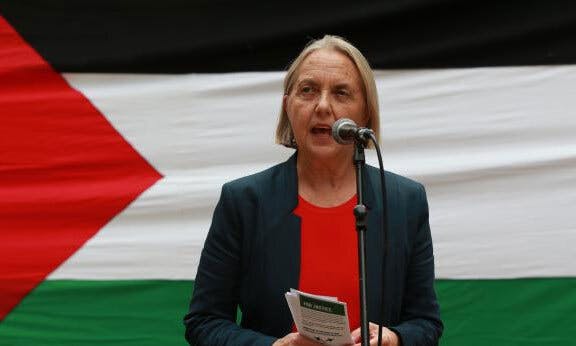Why Bob Brown attacks NSW Greens

The New South Wales Greens’ underwhelming performance in the federal election has, predictably, brought the knives out.
The right in the party, which has always been critical of the left-controlled branch, is again making the case for “generational change” – lightly coded messaging to push more right wing opportunists into the leadership.
Speaking on the ABC’s 7:30 on 29 July, party elder statesman Bob Brown said: “The result in New South Wales has been long term disappointment to me … Some reform in the Greens in New South Wales is required. It’s been held back by the old guard … it’s time they got out and made room for new, younger … people more in tune with the Australian public in 2016”.
NSW fared badly compared with the more right wing Victorian branch on 2 July. “Something’s missing there. And it’s an appeal, as far as the New South Wales voters are concerned. They want new young vigour”, Brown said.
None of this is particularly new. Brown has for at least one-quarter of a century pressed to mainstream the organisation, and by and large he has got his way. But on 29 July, he took it further, publicly calling for the state’s sole senator, Lee Rhiannon, to step down, accusing her and her supporters of being out of touch and of “blatant” factional manipulation.
It might be true that the NSW Greens being known as more left wing has brought electoral overheads in the increasingly-wealthy inner west of Sydney, even despite the party running a politically moderate campaign little different from those in the rest of the country (according to people residing in the key divisions of Sydney and Grayndler).
NSW Greens have a stronger history of maintaining open connections with grassroots campaigns. In relation to Palestine solidarity in particular, this has opened them up to at times hysterical right wing attacks in the parliament and in the press. That was also the case when they ran Jim Casey, a socialist union leader, for Grayndler this year.
Some say that the party was up against Labor left stars Anthony Albanese and Tanya Plibersek, and couldn’t therefore expect to do as well as, say, Victorian candidate Alex Bhathal, who was up against unpopular bumbling right wing millionaire David Feeney in Batman. There is merit in that argument. But there’s more to it. After all, Adam Bandt in Victoria forced the early retirement of leading Labor left figure Lindsay Tanner in 2010. Tanner was hardly an unpopular candidate, but could see that he was not going to win his seat and didn’t recontest.
For the right in the Greens, the Victorian successes are proof that the moderation strategy has been a vote winner in affluent inner city suburbs. Brown said, “I’ve been approached in the streets in Sydney, and people say, ‘I’m a Green but I’m not going to vote for the candidates you put up here in Sydney’”.
The argument is a bit self-serving, and elevates one factor above many, but I think it’s true in the gentrifying areas. Fully embracing parliamentarism after the 2010 election by signing a stability agreement with the ALP government clearly hurt the overall party vote. But that’s a trade off; electorally, being viewed as part of the political establishment has pluses and minuses among different constituencies and is a balancing act between broader Senate representation and building a more narrowly focussed House of Representatives geographic (and therefore demographic) base.
For anyone left wing, however, winning ever more votes shouldn’t be the most important thing. It’s much more important to push against electoral opportunism, to win arguments about collective action and to lead by example by publicly campaigning against the bosses, against Islamophobia and so on.
Bob Brown and the bulk of the Greens’ establishment think otherwise. They want the party to be a political home for progressive voters, but they don’t want even a sniff of leftism in the power centres of the organisation if they believe it will cost votes. That’s what the attack on the NSW branch is about.